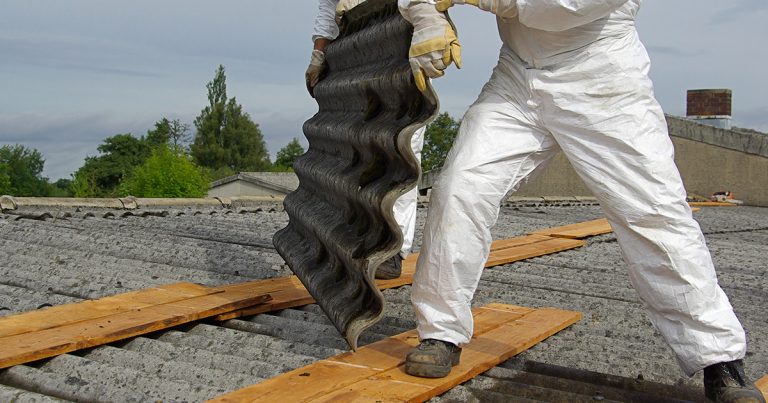Asbestos removal is a critical issue that demands our attention and immediate action.
Found in numerous building materials, asbestos was once widely used due to its durability and heat-resistant properties. However, we now know that asbestos poses significant health risks, making its removal a matter of utmost importance.
The inhalation of asbestos fibers can lead to severe health conditions, including lung diseases and various forms of cancer. What makes asbestos particularly dangerous is its ability to remain hidden for years, silently posing a threat to our well-being.
Therefore, it is essential to address asbestos hazards promptly and take decisive steps to safeguard our health and the well-being of our loved ones. In this article, we will explore the importance of licensed asbestos removal, the health risks associated with asbestos exposure, and why immediate action is crucial to mitigate these dangers.
Where can asbestos be found?
Asbestos can be present in various forms within residential properties, posing a potential health risk to occupants. It was commonly used in building materials due to its fire resistance and durability.
Some of the common building materials that may contain asbestos include insulation, roofing materials, ceiling tiles, floor tiles, pipe insulation, and textured paints. Additionally, older homes may have asbestos-containing materials in their walls, attics, and ductwork.
Asbestos can also be found in heating systems, electrical panels, and even in household appliances.
It is important to be aware of these potential sources of asbestos contamination in homes, as their deterioration or disturbance can release hazardous asbestos fibers into the air, increasing the risk of exposure. Regular inspection and proper handling of these materials are crucial for maintaining a safe and healthy living environment.
What health issues can asbestos cause?
Exposure to asbestos fibers can have severe health implications. When asbestos-containing materials are disturbed or deteriorate, microscopic fibers can be released into the air and easily inhaled. Over time, these fibers can accumulate in the lungs, leading to serious health conditions.
The health effects of asbestos exposure can vary from respiratory issues, such as coughing and shortness of breath, to more severe conditions like asbestosis, lung cancer, and mesothelioma. One concerning aspect of asbestos-related diseases is their latency period, which can range from 10 to 50 years or more.
This means that individuals may not experience symptoms or realize the damage caused by asbestos exposure until decades after initial contact. Furthermore, certain groups, such as children and the elderly, are particularly vulnerable to the health risks associated with asbestos. Children may face prolonged exposure during their developmental years, increasing the likelihood of long-term health consequences. Similarly, the elderly may have diminished respiratory function, making them more susceptible to the effects of asbestos fibers.
It is essential to recognize the gravity of these health risks and take immediate action to prevent asbestos exposure and protect the well-being of ourselves and our loved ones.
How asbestos should be managed
Assessing and managing asbestos in a safe and effective manner is crucial to minimize the risks associated with exposure.
Professional assessment and testing are essential steps to accurately identify the presence of asbestos in a property.
Engaging certified asbestos inspectors and laboratories ensures thorough and reliable results. Once asbestos is confirmed, it is vital to implement proper safety precautions during the removal process. Personal protective equipment (PPE), such as respirators, gloves, and coveralls, should be worn to prevent direct contact and inhalation of asbestos fibers.
Safe handling practices, including wetting materials to minimize fiber release and using proper containment methods, should be followed to avoid spreading asbestos particles. It is also important to establish restricted areas and warning signs to prevent accidental exposure. By adhering to these safety measures, homeowners can ensure the protection of themselves, their families, and workers involved in the removal process.
Take care of your health with asbestos removal professiaonls
The health risks associated with asbestos exposure are too significant to ignore. The potential long-term consequences, such as respiratory diseases and cancers, highlight the urgency to address asbestos hazards in our homes.
By being aware of the presence of asbestos and taking immediate action, we can safeguard our health and the well-being of our loved ones.
Seeking professional assistance for assessment, testing, and removal is essential to ensure the proper management of asbestos. It is crucial to prioritize safety, following recommended guidelines for personal protective equipment and safe handling practices during asbestos removal.
Do not underestimate the importance of awareness, action, and professional assistance in protecting ourselves and our families.
By taking proactive steps to address asbestos in our homes, we can create a safer living environment and contribute to a healthier future for everyone involved.

